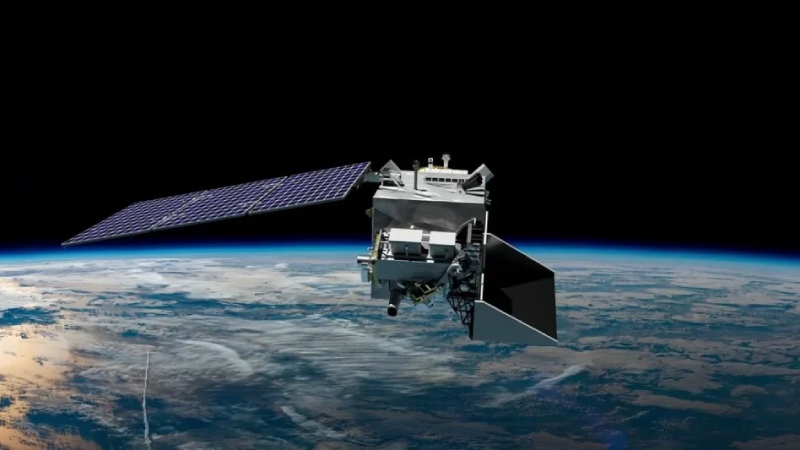A new satellite from NASA, an American space agency, has been launched with the goal of intensively studying the world’s atmosphere and seas.
On February 8, NASA launched the PACE satellite. PACE was launched into orbit from Florida’s Kennedy Space Center by a SpaceX Falcon 9 rocket. NASA said that ground controllers had successfully established contact with the satellite and confirmed the launch.
Plankton, Aerosol, Cloud, and Ocean Ecosystem is referred to as PACE. From an orbit 676 kilometers above Earth’s surface, the satellite will research the environment for at least three years. PACE, according to NASA officials, will use two scientific instruments to map the entire planet every day. Monthly measurements will be gathered by a third device. Within a month or two, scientists should begin receiving their first set of data.
The Project Scientist for the PACE project, or mission, is Jeremy Werdell. According to him, the project is giving people “an unprecedented view of our home planet,” as he told The Associated Press.
Werdell pointed out that enhancing scientists’ capacity to forecast hurricanes and other extreme weather events is a primary objective of the observations. According to him, the equipment can offer comprehensive information on global temperature variations. Scientists may be able to more accurately forecast the timing of dangerous algal blooms with the use of satellite data.
According to NASA, aerosols, or airborne particles, will also be studied by PACE. NASA’s Earth science director is Karen St. Germain. Prior to the introduction of PACE, she informed reporters that aerosol research is crucial since clouds are impacted by them. Cloud density, as well as when and how much precipitation the clouds may release, can all be influenced by aerosols.
St. Germain pointed out that current satellites are ill-equipped to gather comprehensive aerosol data. According to her, PACE will assist NASA in learning more about the long-term effects of aerosols on clouds and climate. Scientists anticipate that the new data will provide “another dimension” to their understanding of how aerosols impact the atmosphere and oceans.
“And then, of course, there is a relationship between the phytoplankton and the aerosols,” St. Germain continued. Very tiny plants called phytoplankton float close to the water’s surface. They provide food for a variety of marine life. “provide food to all sorts of animals ranging from shellfish to finfish to whales,” according to NASA, is what phytoplankton does.
According to NASA, PACE’s instruments will track changes in phytoplankton. The purpose of the satellite is to gather information on aerosols that adhere to phytoplankton. These research will be crucial in determining whether interactions between phytoplankton and aerosols alter phytoplankton in a way that could impact the ocean and its inhabitants.
Numerous Earth-observing satellites and equipment have already been put into orbit by NASA. However, the organization thinks PACE will be able to gather more precise information about the various ways that pollutants and aerosols enter the atmosphere and oceans.
Current Earth-observing satellites are limited to seeing in seven or eight colors, according to Project Scientist Werdell. However, he said that Pace’s 200-color vision will enable scientists to more accurately distinguish between various types of sea algae and airborne particulates.
A $950 million mission is what the news sources indicate it will cost.
The PACE mission comes after NASA’s SWOT satellite launch in December 2022. Sea level and changes in bodies of water throughout time are measured by the SWOT mission. SWOT is a joint project of NASA and the French space agency.
Another Earth-observing satellite that NASA and India are working on will launch this year. The NISAR spacecraft is designed to monitor the impact of increasing temperatures on glaciers and other melting glacial surfaces through the use of radar equipment.
